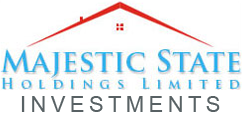These types of highly extensible systems are known as Enterprise Resource Planning (ERP) platforms. In manufacturing accounting, various financial aspects are addressed, including the cost of raw materials, labor, overhead expenses, and inventory valuation. The primary objective is to provide insights into the financial performance and profitability of manufacturing activities, enabling informed decision-making and effective cost management. Standard costing is one of the most common production costing methods among manufacturers.
This is better for high-value items that need differentiation, rather than interchangeable items. Fixed costs in manufacturing are not related to production volumes and must be paid whether or not production is active. A security guard is a fixed cost, as is the cost of the real estate and factory facility, insurance, and other costs required to run a manufacturing business. The solution to this dilemma is to look at the process of upgrading your manufacturing accounting processes as a cycle of continuous improvement. Rather than a one-and-done approach, monitor and regularly review the effectiveness of your current processes.
A guide to small business finance
It is prepared to calculate the cost of goods produced during the year and it is also known as the production account. Direct labor costs typically include wages paid for regular hours, overtime and payroll tax information. The chart of accounts is a record of the valid accounts you assign to the business units within your company’s cash equivalents definition reporting structure. When you set up your chart of accounts, you define the location of the accounts using automatic accounting instructions (AAIs) that indicate which number ranges represent assets, liabilities, and so on. The system underlines LOD 3 on balance sheet reports and LODs 3 and 4 on income statement reports.
- Identifying the margin of profit you earn on the products your business creates and sells is an important part of manufacturing accounting.
- This ensures the business stays on track by assigning the appropriate sales prices for the products.
- Through rigorous cycle accounting and bookkeeping, we ensure the highest level of accuracy for your manufacturing business.
- Deciphering jargon can be a frustrating challenge when you’re learning to navigate the complexities of manufacturing accounting.
- You can sync financial accounts to easily import transaction history, track expenses, double-check transactions for accuracy, and generate important financial statements.
Other manufacturing account types may include administrative costs, marketing costs, and cost of goods sold (COGS). Software programs, apps, and tools can save your business time and potentially money if you’re able to ensure more accurate accounting. Using a software program can also eliminate the need to retain a full-time accountant, which can add to your business expenses. In terms of which expenses to track for a small business, the short answer is all of them. Anything that you spend money on–whether it’s your monthly lease payment, utilities, office supplies, or postage fees–should be recorded in your accounting system.
How a Fractional CFO Optimizes Accounting for Your Manufacturing Business
First, it ensures that you’re deducting the right amounts when you file your taxes and second, it allows you to prove your deductions should your business be selected for a tax audit. If you’re using a tax filing software you may have the option to organize and store receipts electronically. If you’re already using an accounting software program for small businesses, you may be able to generate these statements automatically using the expense and income information you’ve already entered. A chart of accounts is a list of all accounts available for recording transactions in your accounting software program if you use one or a general ledger if you don’t.
Manufacturing Accounting System
Cloud-based software will let you do this and will also produce a paper trail if required. Retailers sell stock and service companies sell their time, but only manufacturers create new products from scratch. Costs are assigned to inventory using either a standard costing, weighted-average cost, or cost layering methodology. See the standard costing, weighted-average method, FIFO, and LIFO topics for more information. You can automate your inventory management by implementing inventory management software, barcode scanners, and warehouse robotics. These tools serve to boost the efficiency with which your inventory is managed and the accuracy of your stock-on-hand records.
Improved Financial Planning
Effective cost management allows you to track production costs and extract information that can be used for informed business decisions. While these types of accounting are certainly important, they don’t provide the same level of detail and insight into manufacturing operations as manufacturing accounting does. Manufacturing accounting is a specialized form of accounting that focuses on the needs of the manufacturing industry. It is designed to provide a comprehensive and detailed view of the financial performance of a manufacturing business.
Production costing methods
This method allows businesses to undertake a proactive approach so that they make a decent margin even if the market witnesses volatility. Target costing also allows businesses to foresee products that might not quite make the cut and discontinue them to capitalize on those that perform better. Despite its advantages, target costing requires constant monitoring of market trends and other parameters to remain rooted. All manufacturers create budgets that they adhere to when running their business during a defined fiscal period. Professional accounting services can completely transform the manufacturing process and save you money on production costs while increasing profit.
This method is preferred by manufacturing businesses due to the ability of cost accountants to track the exact production costs involved, allowing them to arrive at an accurate price quote. This method is by far the most common method used in manufacturing businesses to accurately estimate their costs. In standard costing, businesses assign standard costs for raw materials and labor when factoring them into inventory and production expenses. The value of inventories plays a large role in a company’s finances and profitability, as it directly affects both COGM, COGS, and tax liability.


